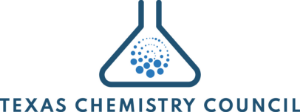Complete Story
01/27/2022
TCC Statement on EPA Ethylene Oxide Regulation
Contact: Caroline Espinosa
(512) 640-5980
espinosa@texaschemistry.org
January 27, 2022
Texas Chemistry Council Urges EPA to Adopt TCEQ Standards on Ethylene Oxide
TCEQ’s Independently Peer Reviewed Assessment is Best Science Available on Ethylene Oxide Risk
AUSTIN, TX – The Texas Chemical Council (TCC) issued the following statement in response to the U.S. Environmental Protection Agency (EPA) announcement that it will continue to rely on its 2016 Integrated Risk Information System (IRIS) risk value for ethylene oxide (EO) in regulating the manufacture of miscellaneous specialty organic chemicals in the 2020 MON final rule.
EO is an organic chemical essential in making a variety of products that Americans use safely every day. These products include clothing, safety glass, pharmaceuticals, shampoos, and sterilization of medical devices, which is extremely important during a global pandemic.
“We are disappointed that the EPA is declining to use the more updated and comprehensive risk assessment values for ethylene oxide,” said TCC President and CEO Hector Rivero. “By choosing to rely on a flawed assessment with acknowledged discrepancies in the data, this action will diminish the availability and affordability of everyday essentials for Americans.”
Rivero continued, “We encourage the EPA to recognize the scientific data collected by the Texas Commission on Environmental Quality’s (TCEQ) toxicologists, which was used to develop a more accurate risk value for EO. TCEQ’s scientific data and research was independently peer reviewed by the University of Cincinnati Risk Science Center. We urge EPA to work with state regulatory agencies and industry scientists to achieve meaningful environmental protections based on the best available science.”
In 2020, TCEQ released an EO long-term effect screening (ESL) with a value of 2.4ppb. However, EPA continues to rely on a 2016 ethylene oxide IRIS assessment, which established the risk value at 1ppt.
The EPA IRIS risk value is far more stringent than levels found in nature. It is 19,000 times lower than the naturally created levels of EO in the human body. It is also significantly lower than the concentrations found in ambient air in states without any EO manufacturing. This data discrepancy in the IRIS assessment has been acknowledged by EPA but remains unexplained and unresolved.
National EO emissions for the industrial sector have already been reduced by over 80 percent since 2002.
“Our industry fully supports environmental policies based on sound science that is validated and supported by independent scientific review,” said Rivero. “We are greatly concerned that this regulatory path by EPA is flawed and will result in dramatic impacts to our healthcare system and have significant global supply chain implications.”
###

